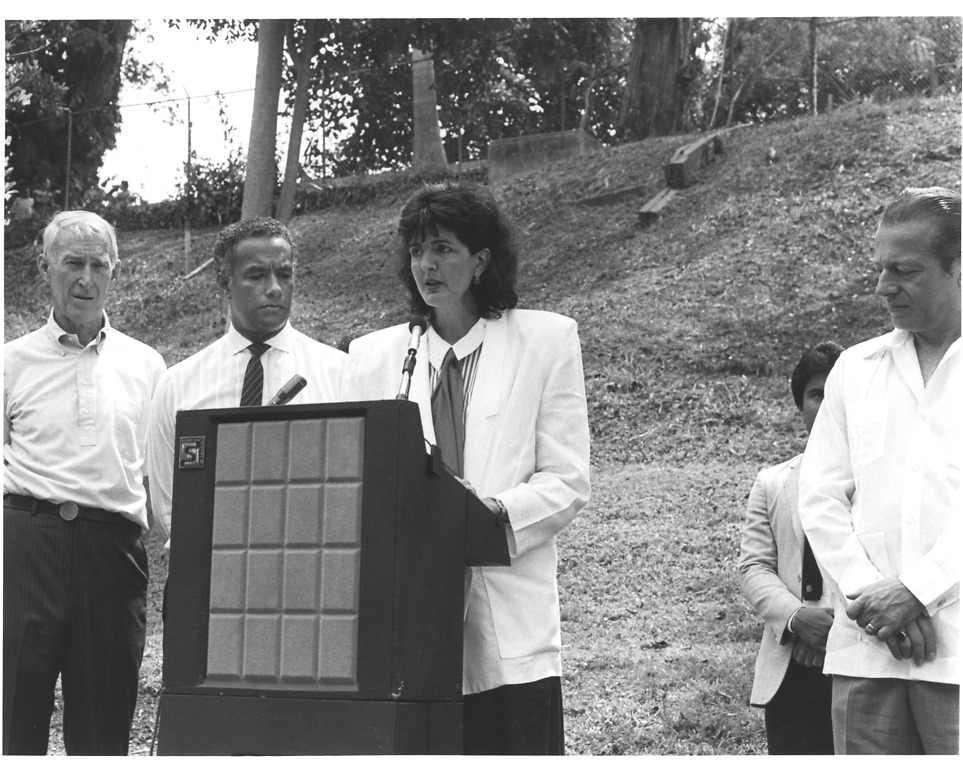Results for "Canal Zone"

Connecting the Oceans: 100th Anniversary of the Panama Canal
- Date: August 14, 2014
- Creator: Pamela M. Henson
- Description: 100 years ago in August of 1914, the Panama Canal opened to commercial shipping. Smithsonian scientists knew the canal would create major environmental changes and have spent the last 100 years documenting them.
- Blog Post
See Here: 6/20/2011
- Date: June 20, 2011
- Creator: The Bigger Picture
- Description: [caption id="" align="aligncenter" width="356" caption="Photo of a termite nest, near Aguadulce, Panama, From 1910 to 1912 the Smithsonian participated in the Biological Survey of the Panama Canal Zone, to document the natural history of the Canal Zone prior to construction of the Panama Canal, 1910-1911, by Henri Pittier, Photographic print, "Completion of the Biological
- Blog Post
Biodiversity Illustrated
- Date: June 30, 2011
- Creator: Marguerite Roby
- Description: While the Smithsonian Institution is perhaps better known for its museums that pepper the landscape of the National Mall in Washington DC, its devotion to scientific research easily matches its dedication to collecting, preserving, and displaying artifacts of cultural and historical importance. The Smithsonian Tropical Research Institute (STRI) started off as a small field
- Blog Post
See Here: 11/23/2010
- Date: November 23, 2010
- Creator: The Bigger Picture
- Description: [caption id="" align="aligncenter" width="413" caption="Francisco "Chi Chi" Vitola, chief of labor force on for the Canal Zone Biological Area (CZBA), feeds a deer on Barro Colorado Island in the Panama Canal Zone, The CZBA was transferred to the Smithsonian in 1924 and in 1946 was renamed the Smithsonian Tropical Research Institute, c.1940, by Unidentified photographer,

There's a new Acting Director at the Smithsonian Tropical Research Institute!
- Date: September 10, 2020
- Creator: Hannah Byrne
- Description: A brief look at the history and attitudes towards women and Latin Americans at the Smithsonian Tropical Research Institute amplifies the significance of Dr. Oris I. Sanjur’s formal appointment as acting director in 2020.
- Blog Post
See Here: 11/22/2010
- Date: November 22, 2010
- Creator: The Bigger Picture
- Description: [caption id="" align="aligncenter" width="430" caption="Administrative offices of the Smithsonian Tropical Research Institute, Ancon Building, Panama City, This tropical laboratory, called the Canal Zone Biological Area (CZBA), and later renamed the Smithsonian Tropical Research Institute (STRI), was transferred to the Smithsonian in 1946, photo taken December 1965, by
- Blog Post
See Here: 1/26/2011
- Date: January 26, 2011
- Creator: The Bigger Picture
- Description: [caption id="" align="aligncenter" width="430" caption="United States National Museum Taxidermist Watson M. Perrygo, on one of his field trips to the Canal Zone Biological Area, Panama, is followed around by his devoted companion, a Baird's tapir, February 28, 1951, by Alexander Wetmore, Photographic print, Smithsonian Institution Archives, Record Unit 7006, Alexander Wetmore

From Plantations to Islands of Science: Travels in Costa Rica and Panama - Part II
- Date: January 31, 2013
- Description: George C. Wheeler and his travel in the Caribbean illustrate the interplay between science and tourism in Latin America.
- Blog Post
A Laboratory in the Jungle
- Date: September 9, 2010
- Description: Access the official records of the Smithsonian Institution and learn about its history, key events, people, and research.

A Wonderful Wetmore Adventure
- Date: May 31, 2016
- Creator: Hillary Brady
- Description: Thanks to our volunteers who transcribed the entirety of the Alexander Wetmore photo album collection!
- Blog Post
See Here: 2/1/2011
- Date: February 1, 2011
- Creator: The Bigger Picture
- Description: [caption id="" align="aligncenter" width="442" caption="A group of scientists leaves Barro Colorado Island in a small boat, during 1923, Smithsonian staff were in Panama with the Institute for Research in Tropical America, a group of private foundations and universities under the auspices of the National Research Council, who first established a research laboratory on Barro
- Blog Post
What’s in a Name? Uncovering Early Women Computers
- Date: December 3, 2019
- Description: We’re uncovering names of some of the earliest women in science at the Smithsonian.
